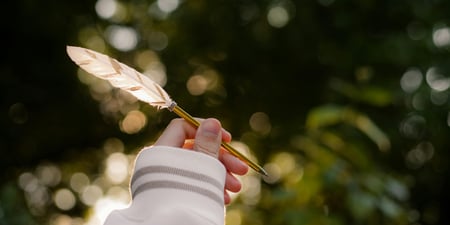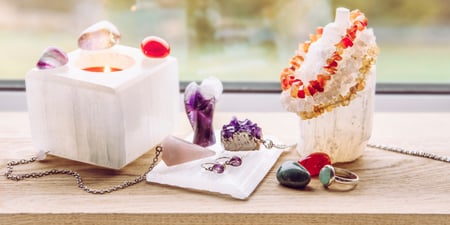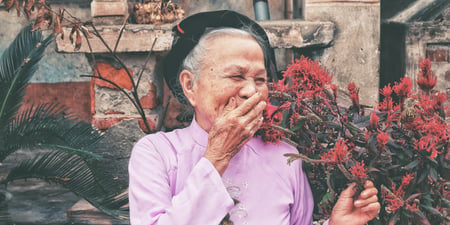
Angkor’s Healing Legacy: The Hospital Chapels
While the beauty of Angkor Wat and Bayon Temple captures most of the visitor’s attention, hidden gems like the ancient hospital chapels unpack another layer of Khmer’s rich history - one dedicated to the healing and well-being of the people. King Jayavarman VII, established 102 hospital chapels which served as sanctuaries of care, promoting holistic health for all classes of society[1]. The visionary leader ensured that these hospitals were professionally staffed with 100 to 200 workers and governed by a set of regulations inscribed in Sanskrit [2]. Beyond their medical function, these chapels offered a holistic approach to health, emphasizing spiritual and physical well-being. Imagine stepping into a serene sanctuary of healing and tranquillity, where both the body and mind are nurtured. This is the essence of the hospital chapels, a testament to the ancient Khmer belief in the connection between physical and spiritual health.
Today, several of these chapels still stand, offering glimpses into a time when healthcare was intertwined with spirituality.
1. Neak Poan Temple
Also known as the sanctuary of healing[3], Neak Poan Temple was the major treatment place believed to have been built as a healing centre, where bathing in one of the pools would cure diseases[4]. The temple is characterized by its central shrine, rising from a double lotus base, surrounded by four smaller shrines connected to the central basin. The central shrine features depictions of Avalokiteshvara and a tri-headed elephant. At the same time, the base is encircled by intertwined nagas flanking a statue of the horse Balaha, a significant figure from Buddhist legend.

2. Don Chan Temple
Don Chan Temple is a small but charming temple, located around 400m to the southwest of the western entrance of Beng Mealea Temple. It has a rectangular enclosure with a single entrance and a shrine. It's thought to be a "hospital chapel" built during the reign of King Jayavarman VII. The temple features carved art and a central shrine made of sandstone, but it's incomplete and in a decayed state[5]. Despite that, its serene setting and architectural beauty make it a captivating site worth visiting.

3. Leak Neang Temple
This chapel is located within the Angkor Thom complex which is well-preserved and served as a reminder of the ancient Khmer's dedication to healthcare. The temple features a typical layout with a sandstone shrine, a hall, and an outer wall with an entrance. There are remnants of artwork including a pediment, lintel, and naga corner piece. The shrine contains a pedestal that once held a decapitated statue and a remnant of the medicine Buddha. Its architecture and intricate details offer a window into the past[6].

4. Ta Nup Temple
Also known as Prasat Samrong, this temple is recognized as one of the many "Hospital Chapels", located on the north side of Kulen Mountain south of the village of Khna. Its location in a more remote setting provides a unique glimpse into the reach of the healthcare system. This site features a central laterite shrine, a library building, an outer wall with an entrance, a small basin, and a larger basin to the east[7].

5. Tonle Snguot Temple
This temple is located around the Angkor Thom perimeter. A recent discovery from excavations revealed a rare Medicine Buddha statue and evidence of habitation. Despite its age and decaying state, this small temple offers a peaceful retreat with a surprising variety of art, making it well worth a visit.
Visiting these hospital chapels adds a unique dimension to your Angkor experience. It allows you to explore a side of Khmer history often overlooked, a history dedicated to healing, compassion, and the pursuit of well-being.

Places with Invisible Healing Energy in Siem Reap
Beyond the hospital chapels, Siem Reap is a treasure trove of spiritual sites that exude healing energy. This region is not merely a backdrop for tourism; it is a sacred landscape where history, spirituality, and natural beauty converge in a harmonious blend that invites visitors to explore their inner selves. One of the most significant aspects is its connection to the Ley lines - which are believed to channel spiritual power, making it a hotspot for those seeking rejuvenation. The ley lines running through the ancient temples and nature-rich landscapes amplify the restorative energy that visitors can feel today. For those open to these energies, standing at these intersections can evoke profound feelings of connection to something greater, making Siem Reap a deeply transformative destination.
Phnom Kulen
Kulen is a sacred mountain where waterfalls and ancient carvings create a serene environment perfect for reflection and healing. The waterfall brings calm and serenity with its soothing sounds and refreshing water, offering a sanctuary where one can fully immerse themselves in the tranquillity of nature. Kulen National Park's Thousand Lingas and the reclining Buddha of Preah Ang Thom pagoda are major attractions. Both sites are significant to Khmer medicine practitioners and those seeking blessings from the area's holy waters, particularly the life-giving waters of Kbal Spean, which are said to enhance fertility[8]. The combination of these elements fosters a sense of peace which is ideal for those seeking to heal and let go of stress.

Ta Prohm Temple
Ta Prohm Temple serves as a powerful reminder of life’s impermanence and the healing power of the natural world. What makes the area unique is the atmosphere that is surrounded by the intertwining roots of ancient trees enveloping the temples. The junction of prehistoric stones and nature is not just visually striking; it embodies a deeper philosophical message about the cycles of life and the inevitability of change. As you wander through the mysterious jungle, take the time to reflect and practice mindfulness as the sacred ambience of the temple embodies spiritual renewal.

West Baray
West Baray is a tranquil reservoir where the calm water and expansive views encourage deep introspection and spiritual connection. The gentle lapping of the water and the stunning sunsets offer a peaceful ambience that encourages a sense of unity with nature. Take a dip in the water or simply soak in the sun by the water's edge, letting the beauty of the surroundings wash over you. By immersing yourself in this restorative environment, it encourages thoughts and emotional processing, facilitating personal healing and emotional balance.

How the Healing Practices of the Past Influence Today’s Wellness Rituals
The Khmer civilization’s holistic approach to health and wellness continues to inspire modern healing modalities. Many ancient practices have parallels with today’s natural and energy-based therapies.
Herbal Medicine
Ancient Khmer medicine relied heavily on herbal remedies and natural treatments. In 19th century Cambodia, French experts witnessed the use of a plant called "Krabav" to treat leprosy by traditional healers in Kampong Cham province. This plant was later studied and was proven to be effective, confirming the value of traditional knowledge. Overall, ancient Cambodian hospitals, depicted in the hospital chapels mentioned above, show evidence of plant-based remedies and other treatments, highlighting a sophisticated healthcare system in the past[1]. This resonates with the modern modalities of natural medicine, which explores the therapeutic properties of plants and other natural substances.
Energy Healing
The presence of shrines and temples dedicated to healing, coupled with the emphasis on spiritual practices, suggests a belief in energy work and its role in healing. This aligns with modern energy healing modalities like reiki, acupuncture, and even some forms of massage therapy. Energy healing practices today often draw upon principles that recognize the interconnectedness of body, mind, and spirit. By tapping into these energetic pathways, practitioners aim to restore balance and promote overall well-being, much like their Khmer ancestors. As modern wellness seekers explore energy healing techniques, they may find inspiration in the ancient rituals that emphasized the importance of spiritual energy in the healing process.
Spiritual Practices
Many ancient Khmer healing practices involved rituals and spiritual ceremonies. These resonate with modern spiritual practices like meditation, yoga, and religious observance, which focus on cultivating inner peace and well-being. Today, the emphasis on mindfulness and self-care reflects the spiritual dimensions of ancient Khmer healing. Modern wellness rituals frequently incorporate elements of meditation and breathwork, fostering a sense of inner peace and holistic well-being. The parallels between the past and present highlight a shared understanding of the importance of spiritual health in achieving overall wellness.

Feeling Inspired?
Siem Reap’s ancient healing sites offer not only a glimpse into history but also powerful inspiration for modern wellness practices. Whether you’re looking to deepen your spiritual journey or elevate your well-being, these locations can provide profound inspiration that you can integrate into your own practice. Here are some of the ideas:
Kru Khmer Healing
Kru Khmer (translated to English as “Khmer Teacher”), the heart of Cambodian tradition, embodies a multifaceted role as healers, spiritual guides, and teachers. As guardians of ancient knowledge, they preserve the methods and values of Khmer medicine. Their skill lies in drawing upon nature's gifts to create healing remedies. This harmonious blend of science and spirituality showcases their profound understanding of holistic well-being. This traditional healing system emphasizes the balance between physical, emotional, and spiritual well-being[9]. With that in mind, incorporating elements of Kru Khmer healing into your own practices can uniquely promote your modalities.
Pagoda Group Meditation
Picture yourself gathered under the shade of sacred trees, surrounded by like-minded individuals, as the tranquil atmosphere is enhanced by the gentle chants of monks. This serene environment fosters a sense of community and shared purpose, allowing you to delve deeper into your meditation practice. Participating in group meditation not only provides a space for personal reflection but also cultivates a collective energy that can amplify your experience.
Sunrise Yoga in Ancient Temples
Imagine starting your day with a yoga session at sunrise, surrounded by the majestic energy of ancient temples, allowing you to soak in the spiritual vibrations of Angkor. Sunrise yoga not only invigorates the body but also nourishes the soul. It creates an opportunity for reflection and intention-setting as you connect with the timeless essence of the temples.
In visiting these sacred places, you not only witness the beauty of Khmer culture but also tap into their ancient wisdom, offering pathways to healing, balance, and well-being. Whether you’re practising yoga, meditating, or simply reflecting, Siem Reap’s spiritual energy can elevate your rejuvenating healing journey.
Diving Deeper Into the Ley Lines
Ley lines are thought to be alignments of ancient monuments, sacred sites, and natural landmarks, carrying the earth's energy[10]. Angkor Wat, a UNESCO World Heritage Site, is renowned not only for its architectural grandeur but also for its position on mystical ley lines. These invisible lines believed to connect sacred sites worldwide, are said to influence the energy and experiences of those who visit. Angkor Grace Wellness Resort, uniquely situated on one of these powerful ley lines, offers guests a distinct opportunity to connect with the natural energies of the region, promoting wellness and healing. Guests who have stayed at the resort have stated that Angkor Grace offers a holistic retreat experience, where they can engage in healing therapies, sound healing sessions, and meditation practices that tap into the earth's natural frequencies. Furthermore, practitioners from various fields have noted a distinct energy at Angkor Grace Wellness Resort. They find the atmosphere conducive to hosting events and sharing their knowledge, making it a haven for those seeking to deepen their understanding and practice of different modalities. The combination of luxurious accommodations and the powerful energies of the ley lines creates a truly unique opportunity for deep relaxation and personal transformation.
In visiting these sacred places, you not only witness the beauty of Khmer culture but also tap into their ancient wisdom, offering pathways to healing, balance, and well-being. Whether you’re practising yoga, meditating, or simply reflecting, Siem Reap’s spiritual energy can elevate your rejuvenating healing journey.
References
1. Rohany I. Healing the Empire: Angkor’s Chapel Hospitals. CamNess;; 2023.
2. Chapel of the hospital. ANGKOR TEMPLES IN CAMBODIA.; [cited on 2024 Oct 11].
3. Planner MSRT. Neak Pean Temple and the Healing Waters of Angkor. My Siem Reap Tours; [cited on 2024 Oct 11].
4. Neak Pean Temple Guide. Just Siem Reap; [cited on 2024 Oct 11].
5. LHuillier RC. Don Chan Temple. Hello Angkor; 2023.
6. LHuillier RC. Leak Neang – Hospital Chapel. Hello Angkor; 2022.
7. LHuillier RC. Ta Nup Temple. Hello Angkor; 2022.
8. Phnom Kulen National Park: The Ultimate Visitor Guid. Siemreap.net; 2023.
9. Kru Khmer: The Heartbeat Of Cambodia’s Traditional Medicine. SRA THNAM; [cited on 2024 Oct 11].
10. Kershner K. What Are Ley Lines? HowStuffWorks; 2023.
Disclaimer: This Content has been developed from our generous global community and is intended for informational purposes only. This Content is not, nor is it intended to be, a substitute for professional medical advice, diagnosis, or treatment and should never be relied upon. Further, the personal views and experiences published are expressly those of the author, and do not represent the views or endorsement of SoulAdvisor through the act of publication on our site.










































